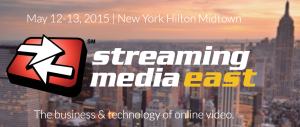#smeast Session: Learn How To Develop OTT Apps for Multiple Platforms
 Time and cost are huge factors when media publishers consider which device platforms they need to support and at the Streaming Media East show next week, we’ll help you figure it all out. In a session titled “Developing OTT Apps for Multiple Platforms“, a mix of developers will discuss the strategic view of supporting multiple devices and the realistic cost for deploying across multiple platforms. Learn the logical operations that can easily be repurposed, and what must be unique to each platform. Using the context of existing Windows, iOS, and Android applications that the panelists have been involved with, the conversation will also cover the most recent Windows 10 announcements and outline what is required for content owners to deliver their services to connected devices. Confirmed speakers include:
Time and cost are huge factors when media publishers consider which device platforms they need to support and at the Streaming Media East show next week, we’ll help you figure it all out. In a session titled “Developing OTT Apps for Multiple Platforms“, a mix of developers will discuss the strategic view of supporting multiple devices and the realistic cost for deploying across multiple platforms. Learn the logical operations that can easily be repurposed, and what must be unique to each platform. Using the context of existing Windows, iOS, and Android applications that the panelists have been involved with, the conversation will also cover the most recent Windows 10 announcements and outline what is required for content owners to deliver their services to connected devices. Confirmed speakers include:
- Moderator: Andy Beach, Technical Evangelist, Consumer Apps, Microsoft
- Kirby Grines, VP, Business Development, Float Left Interactive
- Mano Kulasingam, Co-CEO, Digiflare
- Michael Her, Co-Founder, CTO, NeuLion
Online registration for the event is still open and using the discount code of DR100 will get you a two days pass to all of the keynotes and sessions for only $695. #smeast
